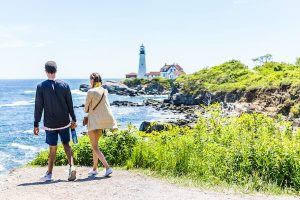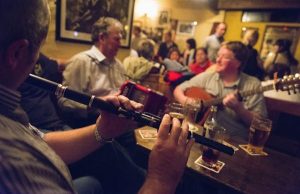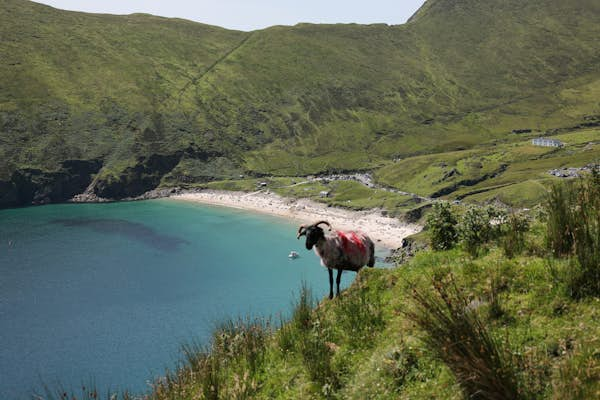
On sunny days, there are few places in the world that can match the beauty of Ireland’s islands.
And even on wet and misty days, the islands are as compelling. Their rugged features become more dramatic. They inspire stories – and adventures. Hundreds of islands dot the coastline of Ireland, each one offering something unique. From the wild tales of pirate queens and one-eyed warrior kings to surprising appearances of wild wallabies or a tropical lagoon in Irish waters, these nine islands can give you an otherworldly experience.
Discover the world’s most intriguing experiences with our weekly newsletter delivered straight to your inbox.  Achill Island was one of the filming locations for the Banshees of Inisherin © Rihardzz/Shutterstock
Achill Island was one of the filming locations for the Banshees of Inisherin © Rihardzz/Shutterstock
Achill Island, County Mayo
Best for cinematic landscapes, outdoor adventures and basking sharks
Along with the Aran island of Inis Mór, Achill was the location for the fictional island of Inisherin in the Oscar-nominated The Banshees of Inisherin. Director Martin McDonagh has stated on occasion that he wanted to capture the beauty of Ireland’s western islands on screen – and it’s easy to see why the island became another protagonist in the film. Home to towering sea cliffs, soaring mountains, sheltered bays and secret beaches, it has striking scenery indeed.
But the island isn’t just getting by on its looks. There are plenty of activities to get into here like hiking, cycling, rock climbing and canoeing. It’s also a great spot for surfing, particularly along the wind-bashed Dooagh Strand, and swimming in any one of the island’s many Blue Flag beaches. Start your day with a morning swim in Keem Bay, a white-sand beach that occasionally attracts basking sharks, before stopping in the Beehive for lunch. Hike the Cliffs of Croaghaun for or learn more about the island through guided tours that walk and talk you through its history like the Colony Tour or the Deserted Village Tour.
Get there: The island is connected to the mainland by bridge and makes an easy day trip from mainland Mayo. You can also approach it by bike on the Great Western Greenway, a 26-mile trail that starts in Westport. Westport Bike Hire organizes twice-daily shuttles between Westport and Achill if you don’t have your own wheels.
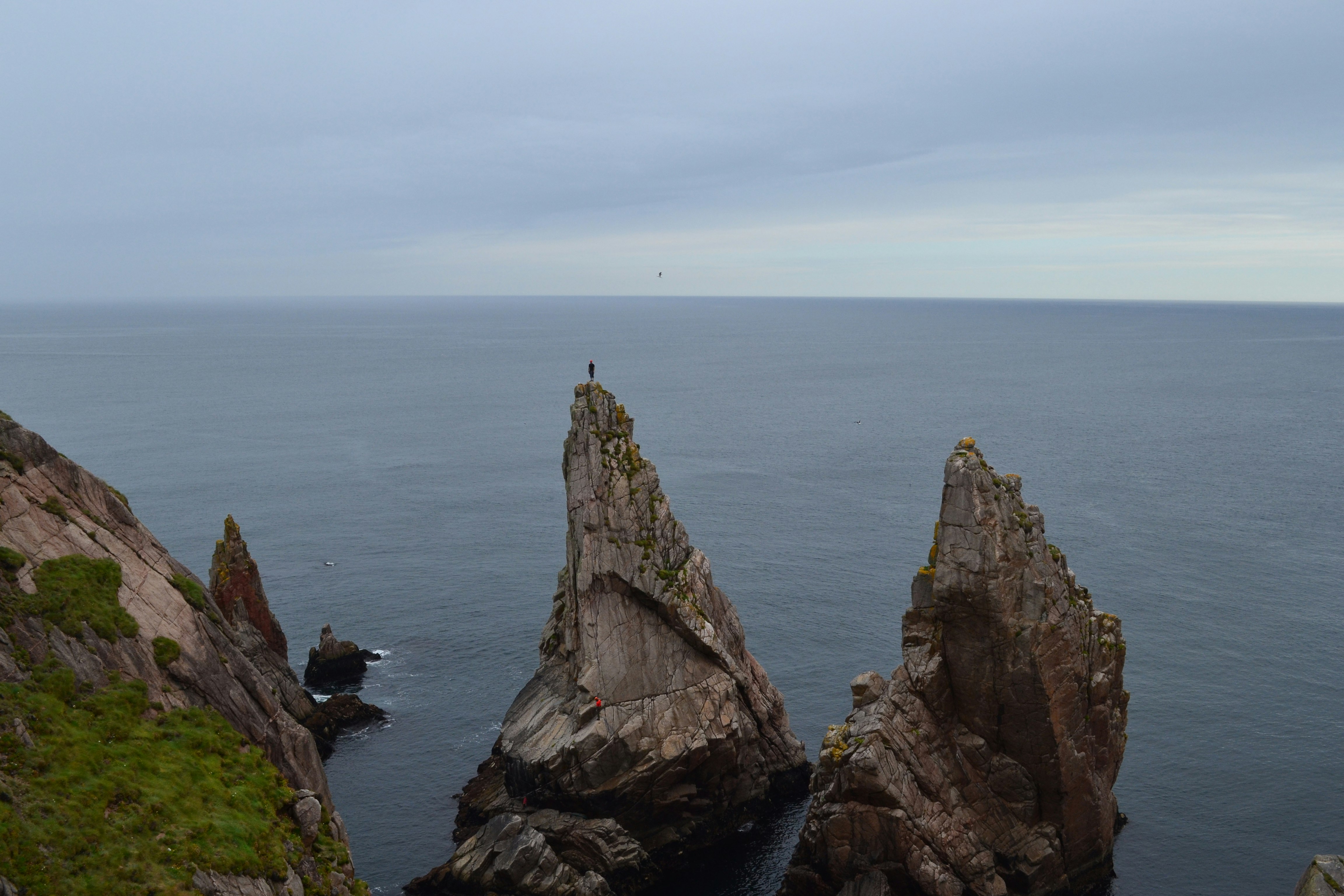
Tory Island, County Donegal
Best for sea dives, mythology and kings
Tory Island is the most remote of all the islands of Ireland. Since it has a population of roughly 150 people, just one hotel and a handful of B&Bs, the buzz of city life will fade away quickly here, with the feeling of bygone days taking its place. As part of Donegal’s Gaeltacht region, Irish is the first language here but English is also spoken.
Tory is a swimmer’s and diver’s dream. We recommend a dip at the harbor or book a diving session with Mevagh Dive Centre to investigate the wreck of the HMS Wasp, a Royal Navy gunboat whose crew was en route to evict poor tenant families in 1884. It’s said that the island’s Neolithic cursing stone, Cloch na Mallacht, was used to steer the ship off course and toward its untimely end.
Tory Island is rich in folklore, with Balor, the one-eyed warrior king of the mythological Irish superrace the Fomorians ruling there. On the east coast of the island, the ruins of his fort (Dún Balor) look out across the Atlantic Ocean. From here, you can see An Eochair Mhór (the big key), a long spur that juts out from a peninsula, forming An Tor Mór (the big rock), where Balor imprisoned his daughter to prevent her from getting pregnant. The locals also have a longstanding tradition of choosing a king to represent them; the last King of Tory passed away, alas, in October 2018.
Get there: Ferries for Tory Island depart every day from Magheraroarty Pier, County Donegal. The journey takes roughly 45 minutes and you can book tickets online.
 Dreamy Inis Meáin © Chris Hill
Dreamy Inis Meáin © Chris Hill
Inis Meáin, County Galway
Best for Irish literary history and scenic seascapes
With 200 people living on the island, Inis Meáin has the smallest population of the three Aran Islands. Since the community is predominantly Irish-speaking, you can immerse yourself in traditional culture while getting back to nature here. While it’s the least visited of the Aran Islands, it offers beach swims, scenic diving spots, ancient ruins and traditional music sessions in the Teach Ósta pub – which means you’ll find plenty to do.
The island is small in size, so you can take in the sights by foot, stopping off to admire wildflowers or going for a swim by the old port. But if you really want to get to know the island, you can rent a bike. Close to the prehistoric stone fort of Dún Chonchúir is the holiday cottage of the playwright JM Synge, who is said to have drawn inspiration for The Playboy of the Western World here. The 300-year-old Teach Synge cottage is now open to the public as a library and a museum. Synge’s chair was a writing spot the author cherished, thanks to its views that overlook the island’s “puffing holes,” where sea water rushes in through a series of natural channels in the cliffs to create a spray, it’s no surprise as to why.
Discover Ireland’s Wild Atlantic Way
Elsewhere on the island, you can view stained glass windows from the studio of renowned artist Harry Clarke in the Mary Immaculate Church or pick up a traditional Aran sweater from Inis Meain Knitwear.
Get there: You can fly with Aer Arann in a 10-seat plane from Connemara Airport. You can also take the ferry: from Ros a’ Mhil with Aran Island Ferries, or from Doolin with Doolin Ferry. Both ferry journeys take roughly 45 minutes.
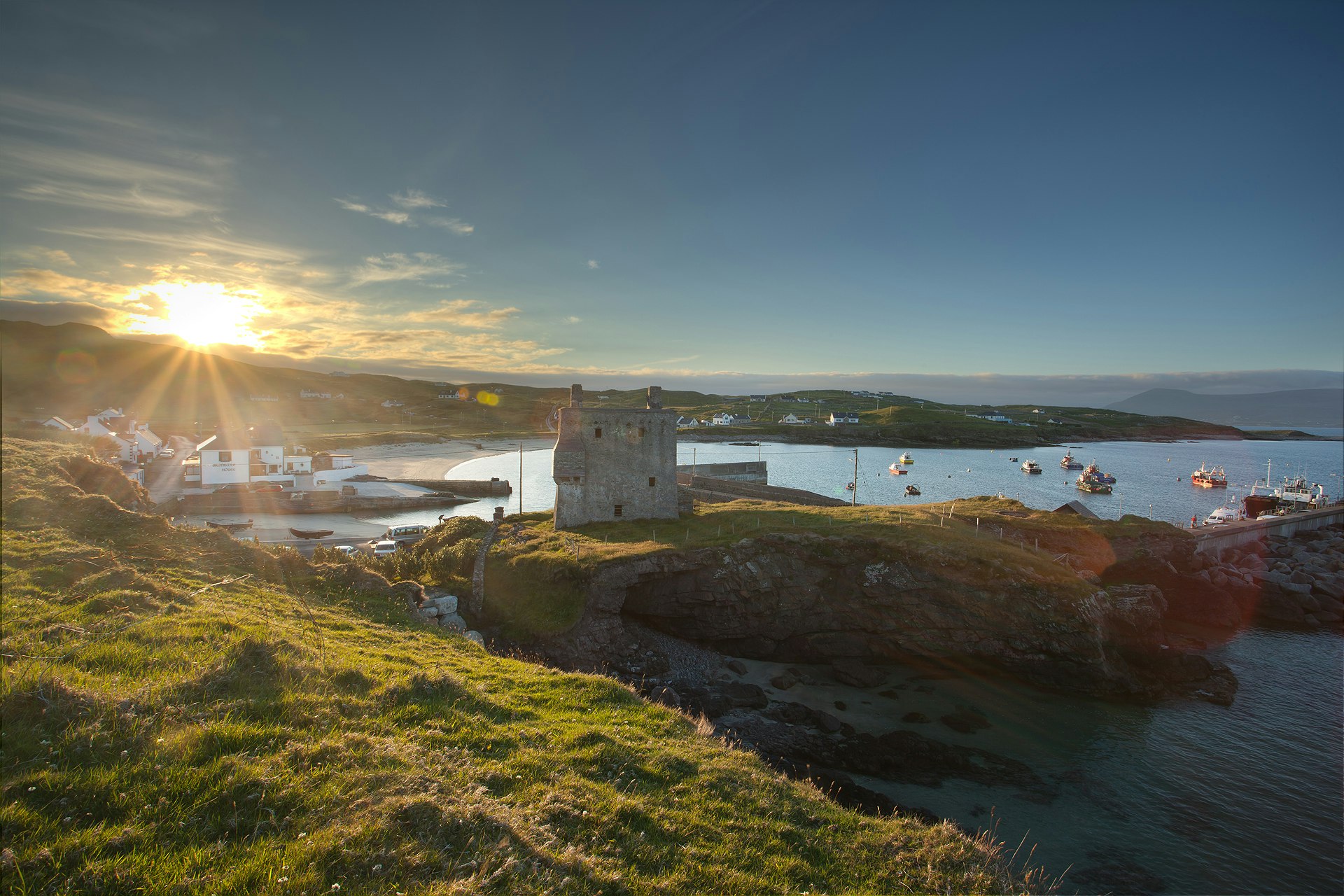 Clare Island Castle Harbour © Kevin Gillmor
Clare Island Castle Harbour © Kevin Gillmor
Clare Island, County Mayo
Best for pirate tales, mountain hiking and mindfulness
Mayo’s Clew Bay is said to have 365 islands – one for each day of the year – yet in reality it has 117, with Clare Island the largest. With hills and mountains filled with historical sites and a Blue Flag beach, this is a perfect island for outdoor activities.
Macalla Farm is a family-run retreat center that combines yoga, horses, food and mindfulness. Since it’s also a working farm, most of the food is produced on site, with vegetarian meals available to guests throughout their stay. Crisscrossing the island are a number of walking and hiking routes that will knock the cobwebs out of your head. Two of the most popular are Clew Bay Archaeological Trail, which includes stop offs at the 13–15th century abbey and a megalithic court tomb, and the Knocknaveena Loop, which takes you up and around the Knocknaveen Mountain.
Things weren’t always so peaceful here. Clare Island is the ancestral home of Gráinne Mhaoil, the fearsome and legendary Pirate Queen. Notorious for wreaking havoc at sea for most of the 16th century, she used her castle here to control the waters of Clew Bay. (You can still visit it today.)
Nowadays there’s plenty to do at nighttime, with the two pubs regularly putting on trad nights as entertainment, balancing the calm of the retreat with the storm of the session.
Get there: It takes approximately 25 minutes to get to Clare Island by ferry from Roonagh Pier, County Mayo. You can book ferry tickets from either Clare Island Ferry Co. or O’Malley Ferries.
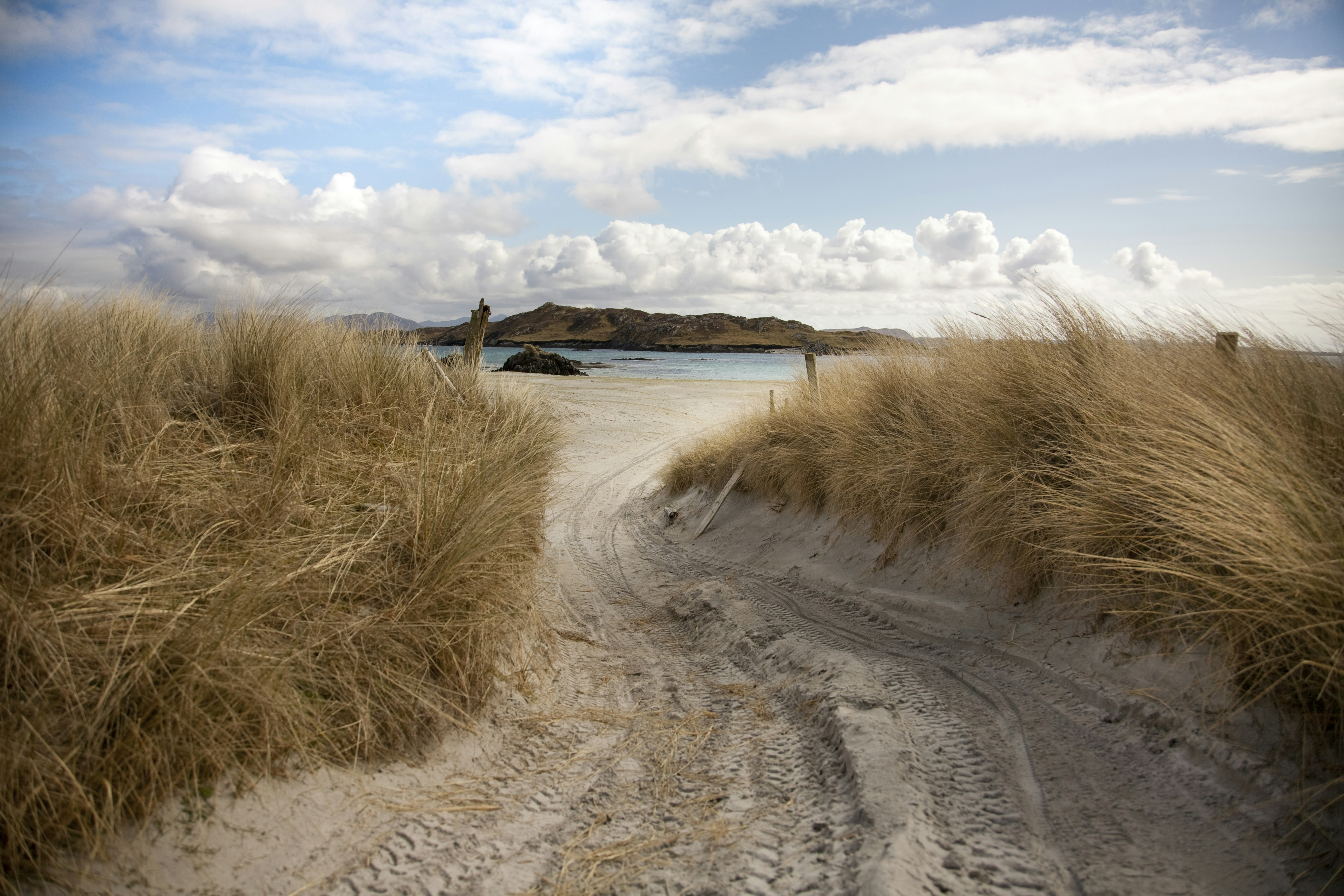 Inishbofin is home to some of the cleanest beaches in Ireland © Henry Donald/Getty
Inishbofin is home to some of the cleanest beaches in Ireland © Henry Donald/Getty
Inishbofin, County Galway
Best for sustainable tourism, food festivals and historical walking tours
One of the most popular islands to visit in Ireland, Inishbofin is both steeped in history and a center for sustainable tourism. As the first Leave No Trace island in the country, a number of its beaches – including East End and Dumhach – have already been awarded the Green Coast Award for environmental excellence thanks to their crystal-clear waters.
Walking tours are a huge draw for visitors here. On three official walking loops, you can take in sights like the Dún More Cliffs, one of the island’s two seal colonies, the 14th-century chapel of St Colman’s and panoramic views of Croagh Patrick, Inishturk and Clare Island. Alternatively, you can walk with the local historians and archaeologists of Cultúr na nOileáin Tours, who will tell you more about the island’s history, including its involvement with a certain Pirate Queen.
Gráinne Mhaol built another castle for herself here, aptly named Dún Gráinne, when her family took ownership of the island. Her Spanish pirate pal Alonzo Bosco built a castle opposite hers – and with these prime viewing spots, they prevented unwanted ships from entering the island by stretching an iron chain castle to castle, looting the cargo from the unfortunately ensnared vessels.
Inishbofin is also famous for its locally produced organic food. The annual food festival Bia Bó Finne, which draws in hundreds of visitors each October, is testament to this tradition.
Get there: To get to Inishbofin, you have to get a ferry from Cleggan Harbour, an hour and a half away from Galway City. The crossing time is roughly 30 minutes; you can book tickets for your trip online.
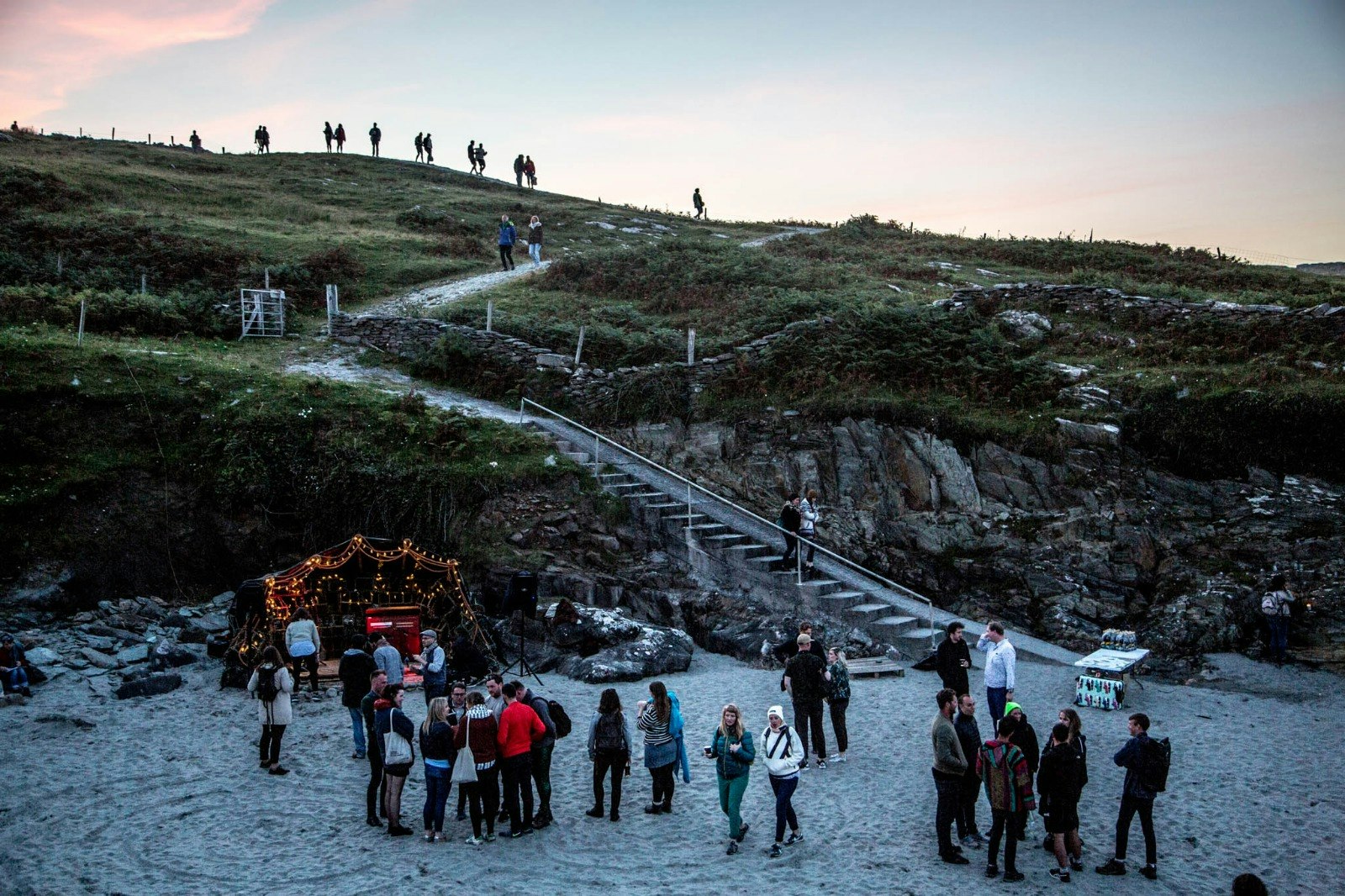 Inishturk beach © Allen Kiely
Inishturk beach © Allen Kiely
Inishturk, County Mayo
Best for world-class crab, lagoons and to feel like a local
Inishturk is the island less traveled. And with a population of just 54 people, you can easily end up feeling like a local rather than a tourist. The beating heart of Turk is its community center – which is also the island’s pub, shop and restaurant – where you can eat freshly caught lobster, pollock, mackerel and perhaps the best crab in the world.
But beyond the people, the hills are begging to be explored. The island’s ring road is exactly 5km long, perfect for runners. Further down the beaten track is the island’s GAA sports pitch, the most westerly one in Europe and – framed by rugged hills – probably the most scenic in the world. Not far from this is another breathtaking view, of Port Dún. This beautiful lagoon harbor is said to be the hiding spot of Gráinne Mhaol’s gold, and makes for a great spot for a swim.
Fishing is one of the island’s main draws and private angling trips can be arranged. But if you’d rather see the pros in action, Turk’s annual Seafest is a great excuse for a visit. The event blends music, wellness, eating and observing; expect to do beach yoga and learn the art of sean nós dancing, foraging or filleting a fish – all in one weekend.
Get there: Inishturk is 50 minutes by ferry from Roonagh Pier, which is not far from gorgeous Westport. Book tickets for your journey here.
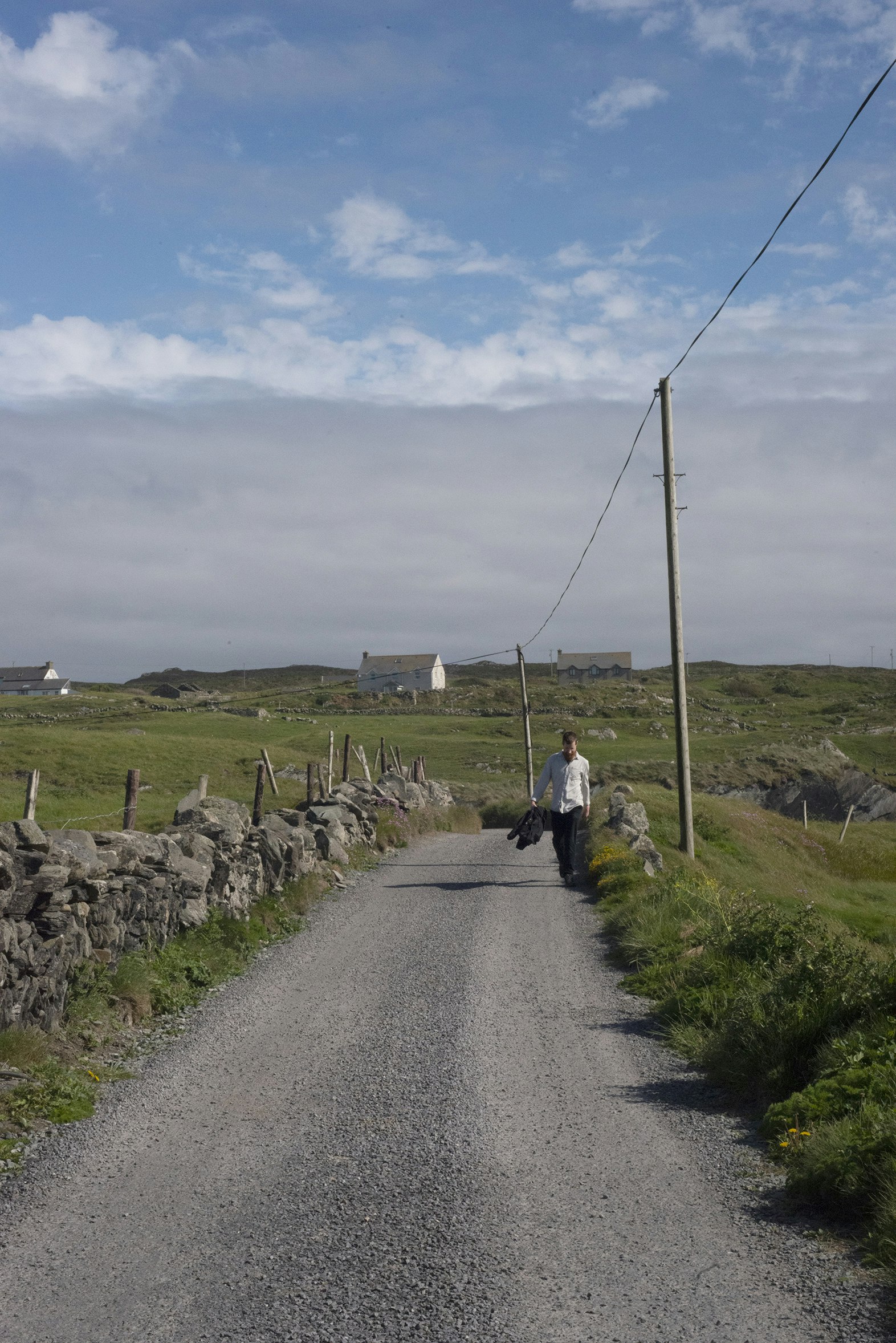 Sherkin Island road © Maeve O’Neill
Sherkin Island road © Maeve O’Neill
Sherkin Island, County Cork
Best for peace, quiet and an artistic vibe
The green hills, sandy beaches and jagged shorelines of Sherkin Island in West Cork contain a total population of 111 people. As the ferry pulls into the pier, you’ll see the ruins of Mainster Inis Arcain, the island’s 15th-century friary. And it’s all uphill from there. Literally.
Take the many twists on the main road to North Shore, with every turn showing a different side of the island, from leafy green canopies of the woodland trees to the dramatic coastline of Cow Strand Beach. With four walkways weaving throughout the island, each one catering to different walking abilities, you can take in the sights before settling into The Jolly Roger for a deserved evening pint. Home to artists, writers and musicians, the island crackles with creativity and locally made knitwear, silverwork, jewelry, wrought-iron pieces, candlesticks and decorative silk scarves is all available to buy.
Living at one of the most southerly points in Ireland, the people of Sherkin Island boast of their own warm microclimate. During the summer months, the island is a hub of activity with events like the Sherkin Island Regatta for rowing and the music festival Open Ear, which specializes in contemporary art and alternative music. Even though things quiet down during winter, it remains a perfect retreat from the fast pace of life elsewhere.
Get there: A ferry from Baltimore, County Cork takes 10 minutes. Book your journey online.
 Kissing puffins on the Saltee Islands © Saverio Morpurgo / 500px
Kissing puffins on the Saltee Islands © Saverio Morpurgo / 500px
Saltee Islands, County Wexford
Best for a nature-filled day trip in a bird-watcher’s paradise
Just off the southern coast of County Wexford lie the two privately owned islands of Great Saltee and Little Saltee. Day visits to Great Saltee are permitted by the island’s residents, the Neale family, though Little Saltee is inaccessible due to the dangerous currents that surround it.
The Saltees are home to Ireland’s most famous bird sanctuary, with birds from all over the world stopping off on this busy migratory route. It’s also one of the few breeding locations for grey seals in eastern Ireland. When visiting the Saltees, you are asked to fully respect the island’s inhabitants, carrying out your own rubbish and avoiding the private home of the Neale family.
Perfect for picnics and rambling, Great Saltee has a rich history that will send your imagination into overdrive. The island is sometimes called the “Graveyard of a Thousand Ships,” and a number of vessels from both world wars sank off its coast. The island also has a regal past: Michael Neale, who bought the island in 1943, declared himself Prince Michael of the Saltees. “Coronated” in 1956, he built a throne, which you can still sit on, and erected an obelisk in his likeness. A mildly eccentric man, he also become a pilot – and it’s rumored that he once flew in 46 cats to deal with the island’s rat problem. Sadly, the cats are no longer there. Which is probably a blessing for the birds.
Get there: The island is accessible by the Saltee Ferry from Kilmore Quay, Wexford Town. If the family is in residence, day-trippers are only allowed between 11:30am and 4:30pm only; any visitors that land a boat outside of designated hours will be asked to leave. No overnight camping is permitted.
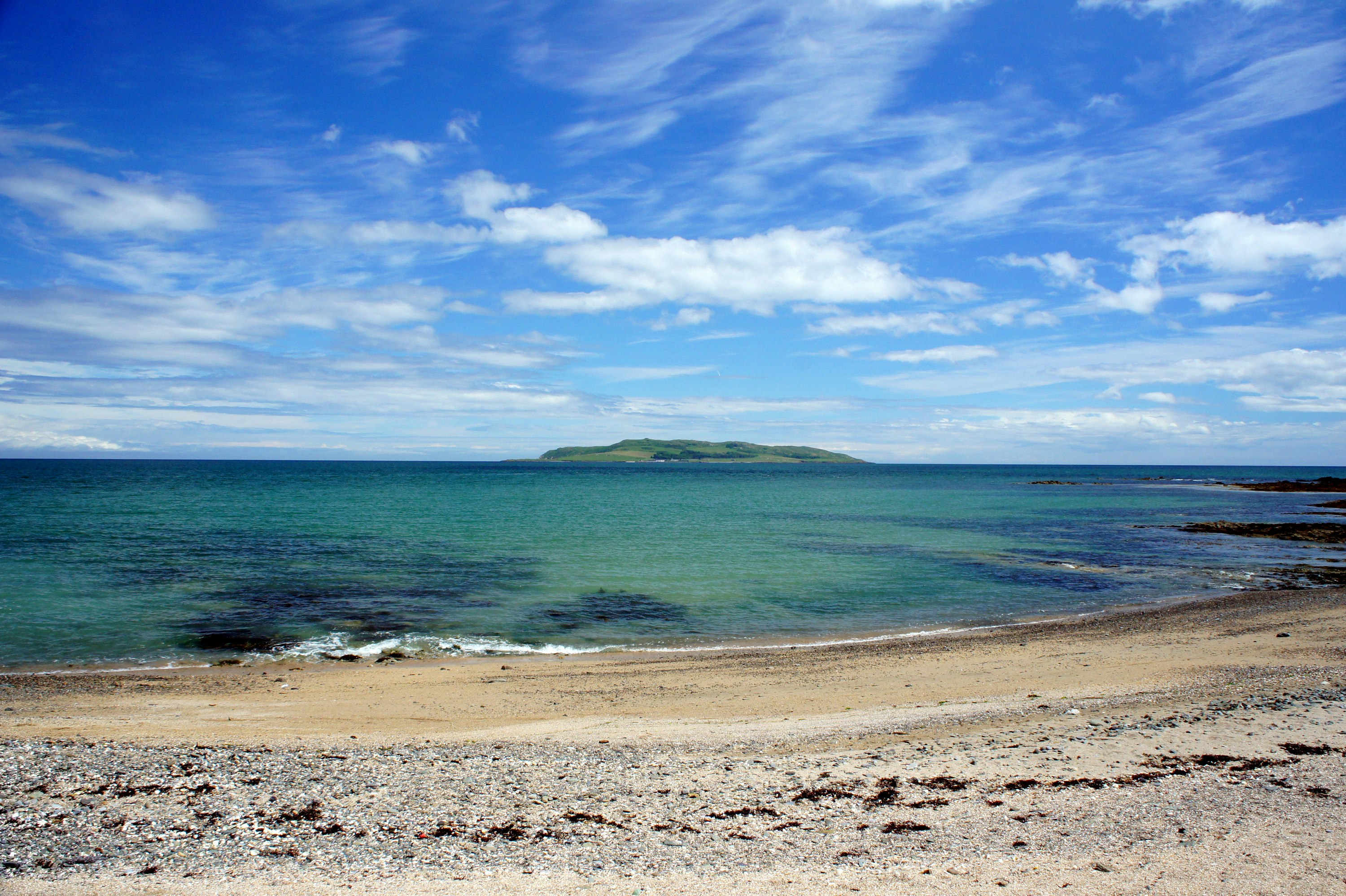 Lambay Island is now accessible to the public © VVlasovs/shutterstock
Lambay Island is now accessible to the public © VVlasovs/shutterstock
Lambay Island, County Dublin
Best for a private retreat with some unusual wildlife
Located just four kilometers off the coast of County Dublin, Lambay Island is privately owned, with a population of seven people, 100 red-necked wallabies, 200 fallow deer and thousands of seabirds. The island has been owned by the Barings family since 1904, and there’s an air of luxury due to the limited accommodation that’s available throughout the year.
The island has a total of 23 rooms, and only guests who have an existing connection to Lambay can stay in the renovated 15th-century castle or the White House. The rest of us can request to stay in O’Connell’s Cottage, which sits at the end of a row of 18th-century coastguard cottages and sleeps six people. If you fail to nab a bed, day tours are available, with options to go on walking and historical tours or simply to visit for lunch.
Throughout the year, various retreats are on offer including yoga, writing, foraging and cooking. The water from the island’s natural spring is not only used for drinking, washing, cooking and bathing: it’s also used to create the island’s own Lambay Whiskey.
Get there: The ferry takes 15–30 minutes from Malahide. You can book tickets from Skerries Sea Tours or find out about staying on the island here.

